Did you know that yellow capsicum, also known as bell pepper, is not only a colorful and delicious vegetable but also a powerhouse of vitamin C? That’s right, this vibrant veggie is a fantastic source of vitamin C, which is essential for a strong immune system and overall good health. Whether you’re a seasoned gardener or just starting out, growing your own yellow capsicum can be a rewarding experience that adds a burst of flavor and nutrition to your meals.
Key Takeaways:
- Yellow capsicum is a rich source of vitamin C, making it a valuable addition to your diet.
- Growing your own yellow capsicum allows you to enjoy its fresh and sweet taste.
- Yellow capsicum can be used in various dishes, from salads to grilled favorites.
- It’s easy to grow yellow capsicum in your garden or even in containers.
- By following the right growing tips and best practices, you can have a successful yellow capsicum harvest.
Characteristics of Yellow Capsicum
Yellow capsicum, also known as yellow bell pepper, is a versatile and colorful vegetable that is prized as a cooking ingredient. It not only adds a vibrant pop of color to dishes but also packs a flavorful punch. With its high antioxidant content, yellow capsicum is not only visually appealing but also a health-conscious choice.
When it comes to maturity, yellow capsicum peppers typically take around 70 to 75 days to reach their full growth potential. At this stage, they measure approximately 13cm (5 inches) in length, making them a substantial ingredient for various culinary creations.
For optimal growth, yellow capsicum plants require full sun exposure and well-drained soil with a pH level between 5.6 and 7.5. It is important to space the plants 45-60cm (18-24 inches) apart, allowing room for their height to reach up to 90cm (36 inches). Whether you have a vegetable garden or raised beds, yellow capsicum thrives in these environments, providing abundant harvests for your cooking endeavors.
Yellow capsicum is a versatile ingredient that can be utilized in a range of cooking methods, including stir-fries, soups, stews, roasting, and grilling. Its brilliant yellow hue enhances the visual appeal of any dish, while its delightful flavor elevates the taste profile.
Growing Tips for Yellow Capsicum
When it comes to growing yellow capsicum, there are a few key tips to keep in mind to ensure optimal growth and a bountiful harvest. Here are some essential guidelines to follow:
Growing Zones and Temperature
Yellow capsicum plants thrive in warm weather with temperatures of 15°C (59°F) and higher. It is crucial to plant them outdoors after the threat of frost has passed. If you live in an area with colder climates, it’s best to grow them in a greenhouse or start them indoors before transplanting them outside.
Watering
Proper watering is essential for the health and productivity of yellow capsicum plants. They require regular watering to keep the soil evenly moist. Depending on rainfall and temperature, watering every 2-3 days is usually sufficient. Remember to water at the root zone rather than overhead to prevent diseases.
Feeding
Yellow capsicum plants are heavy feeders, meaning they require regular fertilization to thrive. Use a high-quality vegetable-specific fertilizer once or twice a month to provide the necessary nutrients. This will help promote healthy growth, strong fruit development, and improve overall plant productivity.
Sunlight
Yellow capsicum plants prefer full sun exposure, which means they need at least 6 hours of direct sunlight each day. Ensure they have a sunny spot in your garden or greenhouse to maximize their growth potential.
Additionally, it is advisable to use stakes or a trellis to provide support for the plants, especially when they start to bear fruit. This will prevent the branches from bending or breaking under the weight of the peppers.
To summarize:
– Plant yellow capsicum after the last threat of frost
– Provide regular watering at the root zone
– Feed with a vegetable-specific fertilizer once or twice a month
– Ensure at least 6 hours of direct sunlight daily
– Use stakes or trellis for support
By following these growing tips, you’ll be well on your way to successfully cultivating vibrant and delicious yellow capsicum in your garden or greenhouse.
Benefits and Uses of Yellow Capsicum
Yellow capsicum, with its vibrant color and sweet taste, is not only a flavorful addition to dishes but also offers numerous health benefits. This nutritious vegetable is packed with vitamin C, which plays a crucial role in supporting a healthy immune system and promoting overall well-being.
Here are some of the key health benefits of yellow capsicum:
- High in Vitamin C: Yellow capsicum is a fantastic source of vitamin C, providing more than twice the recommended daily intake in just one serving. Vitamin C is an essential nutrient that helps strengthen the immune system, fight off harmful free radicals, and support the body’s natural healing process.
- Rich in Antioxidants: Yellow capsicum contains powerful antioxidants that help protect the body’s cells from oxidative stress and damage caused by free radicals. These antioxidants play a vital role in reducing the risk of chronic diseases, such as heart disease and certain types of cancer.
- Good for Eye Health: This vibrant vegetable is loaded with carotenoids, including lutein and zeaxanthin, which are associated with promoting eye health. These compounds help protect the eyes from age-related macular degeneration and cataracts, two common eye conditions that can negatively impact vision.
- Supports Heart Health: The antioxidants found in yellow capsicum, along with its high vitamin C content, can help support a healthy cardiovascular system. They aid in reducing inflammation, improving blood circulation, and maintaining proper cholesterol levels, ultimately reducing the risk of heart disease.
Not only is yellow capsicum beneficial for your health, but it also adds a burst of color and flavor to a variety of dishes. Its versatility allows for various cooking methods, including:
- Stir-Fries: Sauté yellow capsicum with other vegetables and proteins for a colorful and nutritious stir-fry.
- Soups and Stews: Add diced yellow capsicum to soups and stews for added flavor and texture.
- Stuffing: Fill halved yellow capsicum with a savory filling, such as rice and ground meat, and bake for a delicious stuffed pepper dish.
- Roasting: Roast yellow capsicum in the oven until tender and slightly charred for a smoky and sweet flavor.
- Grilling: Grill yellow capsicum halves until they are nicely charred, then use them as a flavorful base for grilled meats or sandwiches.
The possibilities are endless when it comes to incorporating yellow capsicum into your cooking. Get creative in the kitchen and enjoy the health benefits and delightful taste that this versatile vegetable offers.
Here’s a simple recipe featuring yellow capsicum:
Yellow Capsicum and Feta Salad:
This refreshing salad combines crisp yellow capsicum slices with crumbled feta cheese, juicy cherry tomatoes, and a tangy vinaigrette dressing. It’s the perfect dish for a light lunch or a colorful side salad.
| Ingredients: | Instructions: |
|---|---|
| 2 yellow capsicums, thinly sliced | 1. In a large bowl, combine the yellow capsicum slices, crumbled feta cheese, and halved cherry tomatoes. |
| 200g feta cheese, crumbled | 2. In a small bowl, whisk together olive oil, lemon juice, Dijon mustard, salt, and pepper to make the dressing. |
| 250g cherry tomatoes, halved | 3. Drizzle the dressing over the salad and gently toss to coat all the ingredients. |
| 2 tablespoons olive oil | 4. Serve the salad immediately and enjoy! |
| 1 tablespoon lemon juice | |
| 1 teaspoon Dijon mustard | |
| Salt and pepper, to taste |
Try this recipe and savor the refreshing flavors of yellow capsicum combined with the saltiness of feta cheese and the juiciness of cherry tomatoes. It’s a delightful way to enjoy the health benefits of this vibrant vegetable.
Growing Yellow Capsicum in Containers
Container gardening is a fantastic option for growing yellow capsicum, especially if you have limited garden space. With a few planting tips and care instructions, you can successfully nurture vibrant yellow capsicum plants right on your patio or balcony.
When choosing a container, make sure it is large enough to accommodate the plant’s growth. A pot with a diameter of 10-12 inches is recommended for a single yellow capsicum plant. This allows the roots to spread comfortably and ensures proper nutrient uptake.
Next, select well-drained and fertile soil for your container. A good quality potting mix will provide the necessary nutrients and drainage for optimal plant growth. Position the container in a sunny location, as yellow capsicum plants require at least 6 hours of direct sunlight each day to thrive.
Watering is crucial for container-grown yellow capsicum plants. Keep the soil consistently moist, but not overly saturated. Avoid allowing the soil to dry out completely between watering, as this can negatively impact plant growth. Regularly check the soil moisture level and adjust your watering schedule accordingly.
Feeding your container-grown yellow capsicum plants is vital for their overall health and productivity. Apply a balanced vegetable fertilizer according to the package instructions, usually once every 2-3 weeks during the growing season. This will provide the necessary nutrients for strong growth and abundant fruit production.
To maintain the health of your yellow capsicum plants, regularly monitor for pests and diseases. Inspect the leaves, stems, and fruits for any signs of infestation or damage. Treat any problems promptly using organic pest control methods, if necessary, to protect your plants and ensure their continued growth.
“Container gardening offers a convenient and space-saving way to grow your own yellow capsicum plants. With a little care and attention, you can enjoy a bountiful harvest of delicious and nutritious peppers right at home.”
Container Gardening Tips for Yellow Capsicum:
- Choose a pot with a diameter of 10-12 inches.
- Use well-drained and fertile soil.
- Position the pot in a sunny location.
- Water consistently, keeping the soil moist but not waterlogged.
- Feed with a balanced vegetable fertilizer every 2-3 weeks.
- Regularly monitor for pests and diseases.
Comparison of Container vs. Garden Bed Gardening for Yellow Capsicum
| Factors | Container Gardening | Garden Bed Gardening |
|---|---|---|
| Space Requirement | Requires limited space | Requires larger area |
| Portability | Portable and can be moved | Not portable, fixed in one location |
| Soil Control | Can use quality potting mix | May require soil amendments |
| Weed Control | Minimal weed growth | May require regular weeding |
| Watering | Requires regular watering; can be more controlled | May require irrigation system or frequent hand watering |
| Planting Density | Can space plants closer together | Requires proper spacing for plant growth |
Companion Plants for Yellow Capsicum
When planning a garden with yellow capsicum, companion planting can play a crucial role in promoting a thriving and productive environment. By strategically selecting complementary vegetables and herbs to grow alongside yellow capsicum, you can enhance its growth, ward off pests, and create a harmonious garden ecosystem.
Here are some excellent companion plants for yellow capsicum:
- Tomatoes: Tomatoes make fantastic companions for yellow capsicum. They naturally repel common pests such as aphids and whiteflies, providing a protective shield for your pepper plants.
- Basil: The aromatic scent of basil acts as a natural insect deterrent. Planting basil alongside your yellow capsicum can help keep pests at bay while adding delicious flavor to your garden.
- Marjoram: Marjoram is known for its insect-repellent properties, making it an effective companion plant for yellow capsicum. It also attracts beneficial insects such as bees and butterflies, promoting pollination.
- Parsley: Parsley not only complements the flavor of yellow capsicum in cooking but also attracts beneficial insects that prey on garden pests. It’s a win-win for the taste and health of your plants.
- Oregano: Oregano is a strong-flavored herb that can help deter pests like aphids and spider mites. It adds a fragrant touch to your garden while protecting your yellow capsicum from unwanted visitors.
Companion planting with these vegetables and herbs can create a mutually beneficial relationship in your garden. The strategic placement of companion plants alongside yellow capsicum can effectively repel pests, attract beneficial insects, and enhance the overall health and productivity of your garden.
Harvesting and Storing Yellow Capsicum
When it comes to enjoying the fruits of your labor, harvesting and storing yellow capsicum is an important step. Let’s explore the best practices for harvesting and storing these vibrant golden peppers.
Harvesting Time and Ripeness
Yellow capsicum is typically ready for harvest when it reaches its mature size and turns a vibrant golden yellow color. The peppers should be firm to the touch and have a glossy appearance. It is crucial to avoid picking them too early when they are still green, as they need time to fully ripen and develop their sweet flavor.
The Harvesting Process
When harvesting yellow capsicum, it is essential to handle the plants with care to avoid damaging the stems or branches. You can use a clean pair of pruning shears or simply twist the peppers gently to detach them from the plant. This method ensures that the rest of the plant remains intact and can continue producing more peppers.
Tip: By harvesting yellow capsicum regularly, you can encourage continuous production throughout the growing season and ensure a steady supply of fresh peppers.
Storage Tips
Once harvested, it’s best to use yellow capsicum as soon as possible to enjoy their optimal flavor and freshness. However, if you need to store them for a short period, follow these tips:
- Place the peppers in a cool and dry place, such as a pantry or refrigerator.
- Avoid storing them at temperatures below 7°C (45°F) as this can cause chilling injury and affect the flavor and texture.
- Store yellow capsicum separately from fruits and vegetables that produce ethylene gas, such as bananas and apples, as this can accelerate the ripening process and lead to spoilage.
Note: It’s important to remember that the longer yellow capsicum are stored, the more their texture and flavor may deteriorate. Freshly harvested peppers offer the best taste and nutritional value.
By following these harvesting and storage tips, you can savor the vibrant flavor of yellow capsicum at its peak and enjoy the rewards of your gardening efforts.
Common Pests and Diseases of Yellow Capsicum
Yellow capsicum plants are susceptible to various pests and diseases that can hinder their growth and productivity. It is important to be aware of these common issues and take preventive measures to ensure the health of your plants.
Pests:
1. Aphids: These small insects feed on the sap of yellow capsicum plants, causing stunted growth and distorted leaves. They can be controlled by regularly inspecting the plants and spraying them with a mixture of water and dish soap.
2. Thrips: Thrips are tiny pests that damage the leaves and buds of yellow capsicum plants, leading to reduced fruit production. Yellow sticky traps can help monitor and control thrips infestations.
3. Spider Mites: These microscopic pests suck the fluids from the plants, causing yellowing leaves and webbing on the undersides. Spraying the plants with water and using insecticidal soap can help eliminate spider mites.
Diseases:
1. Powdery Mildew: Powdery mildew is a fungal disease that appears as white, powdery spots on the leaves, stems, and fruits of yellow capsicum plants. It thrives in humid conditions and can be prevented by ensuring proper air circulation and avoiding overhead watering.
2. Bacterial Spot: Bacterial spot is a bacterial disease that causes dark, sunken lesions on the leaves and fruits of yellow capsicum plants. It is spread through contaminated water and can be managed by practicing crop rotation and using disease-resistant varieties.
It is important to regularly monitor your yellow capsicum plants for any signs of pests or diseases. Early detection and appropriate pest control measures can help mitigate the damage and maintain the health of your plants.
Frequently Asked Questions about Yellow Capsicum
As a popular and versatile vegetable, yellow capsicum often brings up common queries. Here are answers to some frequently asked questions about yellow capsicum:
-
How long does it take for yellow capsicum to mature?
Yellow capsicum typically takes around 70 to 75 days to mature from planting to harvesting.
-
Can yellow capsicum be grown in containers?
Yes, yellow capsicum can be successfully grown in containers, provided they have sufficient space, sunlight, and proper care.
-
What are the health benefits of yellow capsicum?
Yellow capsicum is a good source of vitamin C and antioxidants, which can support a healthy immune system and provide various health benefits.
-
How should yellow capsicum be stored after harvesting?
Yellow capsicum can be stored in a cool and dry place, such as a pantry or refrigerator, for several days.
-
Are there any companion plants that work well with yellow capsicum?
Yes, companion plants such as tomatoes, basil, marjoram, parsley, and oregano can be beneficial for yellow capsicum, as they can help deter pests and enhance overall garden health.
-
What are some common pests and diseases that can affect yellow capsicum?
Yellow capsicum plants may be susceptible to pests such as aphids, thrips, and spider mites, as well as diseases like powdery mildew and bacterial spot. Proper monitoring, prevention, and control measures can help mitigate these issues.
By addressing these commonly asked questions, you can obtain a better understanding of yellow capsicum and confidently cultivate this vibrant vegetable.
Tips for Successful Yellow Capsicum Gardening
When it comes to yellow capsicum gardening, following these tips and best practices will help ensure a successful harvest of vibrant and nutritious peppers:
- Choose a sunny location: Select a spot in your garden that receives full sun, as yellow capsicum plants thrive in bright sunlight.
- Optimize soil drainage: Ensure that the soil is well-drained to prevent waterlogging, as excess moisture can lead to root rot and other diseases. You can improve drainage by incorporating organic matter into the soil.
- Regular watering: While yellow capsicum plants need regular watering, it’s important to avoid overwatering, as it can cause root diseases. Water at the root zone to provide moisture directly to the plant’s roots.
- Nutritional needs: Feed your yellow capsicum plants with a vegetable-specific fertilizer to provide them with the necessary nutrients for healthy growth. Follow the recommended dosage and application instructions on the fertilizer packaging.
- Pest and disease management: Keep a close eye on your plants for any signs of pests or diseases. Common pests that affect yellow capsicum include aphids, thrips, and spider mites. Implement pest control measures such as using organic insecticides or introducing beneficial insects to maintain a healthy plant population.
- Harvesting at the right time: To enjoy the fullest flavor and vibrant color, harvest the yellow capsicum peppers when they reach their mature size and turn a bright golden yellow. Cut or twist the peppers from the plant carefully to avoid damaging the stems or branches.
- Proper storage: After harvesting, store your yellow capsicum peppers in a cool and dry place, such as a pantry or refrigerator. This will help retain their freshness and flavor for a longer period. Use them as soon as possible for the best taste.
By implementing these success strategies, you’ll be well on your way to a bountiful harvest of delicious and nutritious yellow capsicum peppers.
Conclusion
Yellow capsicum, also known as bell pepper, is a vibrant and nutritious vegetable that adds color and flavor to your culinary creations. Whether you stuff them, grill them, or include them in salads and salsas, yellow capsicum is a versatile ingredient that can be enjoyed in various cooking methods.
By following the recommended growing tips and best practices, you can cultivate thriving yellow capsicum plants both in garden beds and containers. With proper care and attention, these plants will reward you with a bountiful harvest of golden yellow peppers that are not only delicious but also packed with essential nutrients like vitamin C and antioxidants.
So why not bring some garden gold into your life and grow your own vibrant yellow capsicum? Whether you’re an experienced gardener or just starting out, this flavorful vegetable will brighten up your meals and provide you with a healthy and nutritious addition to your plate. Embrace the joy of growing your own food and savor the taste of homegrown yellow capsicum!

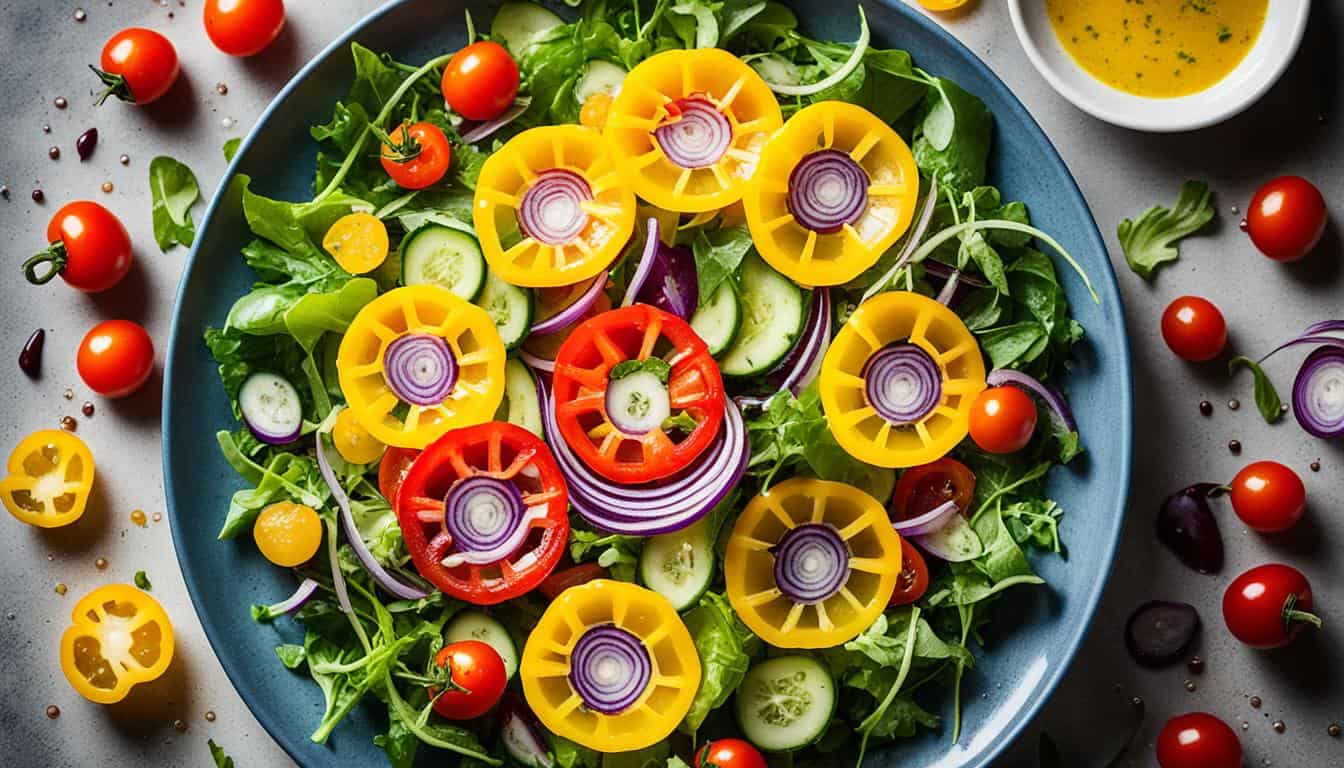
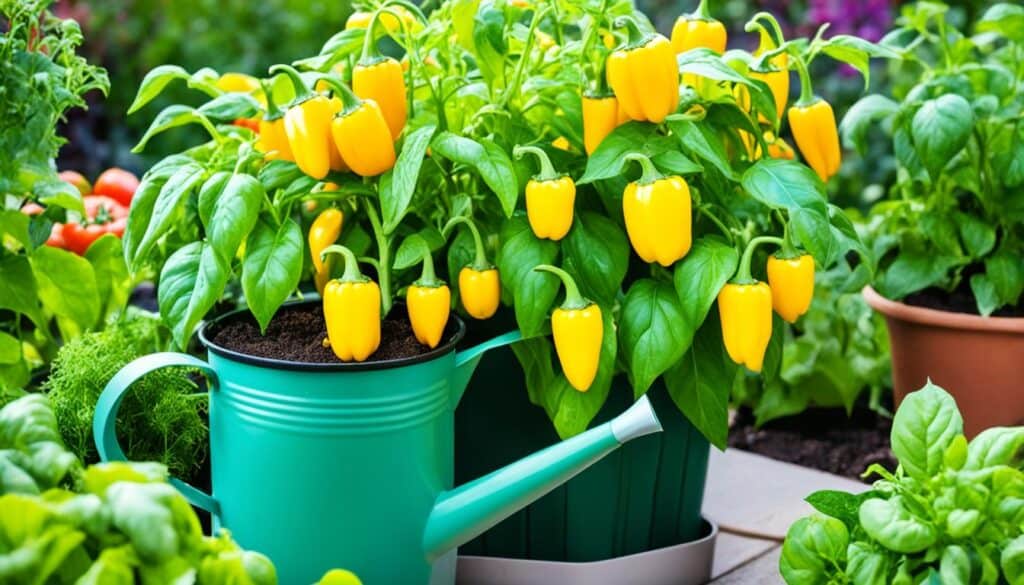
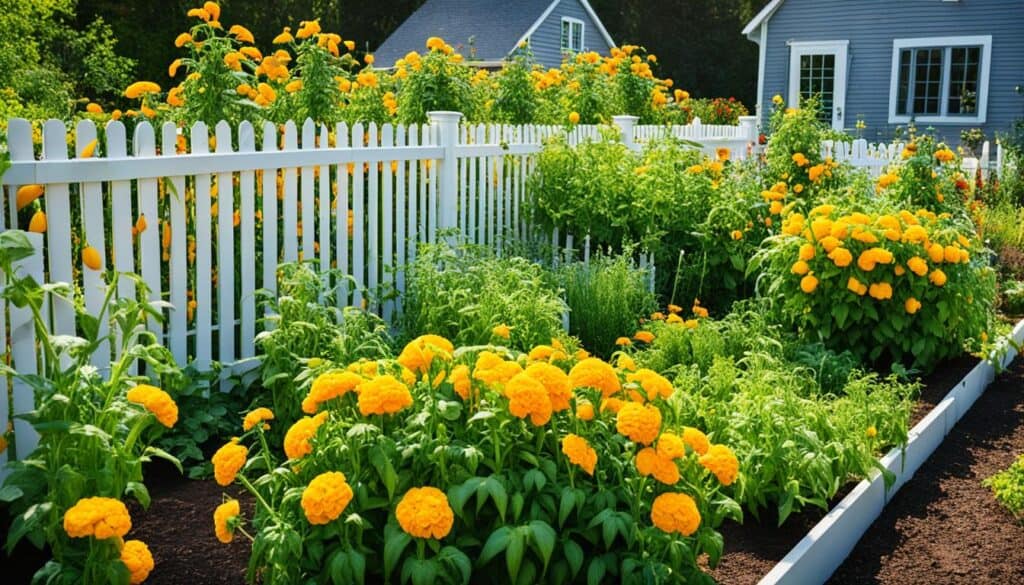
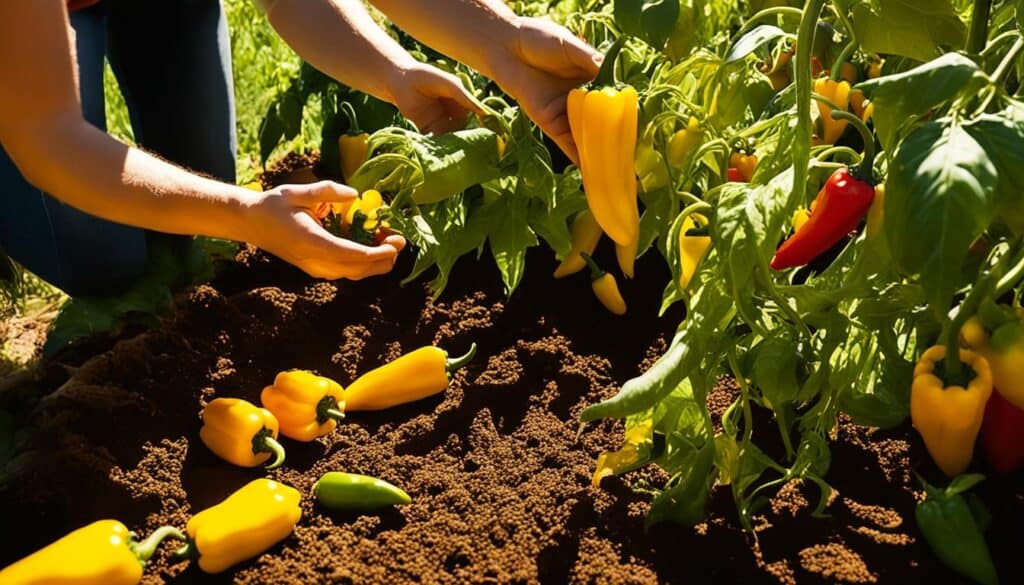
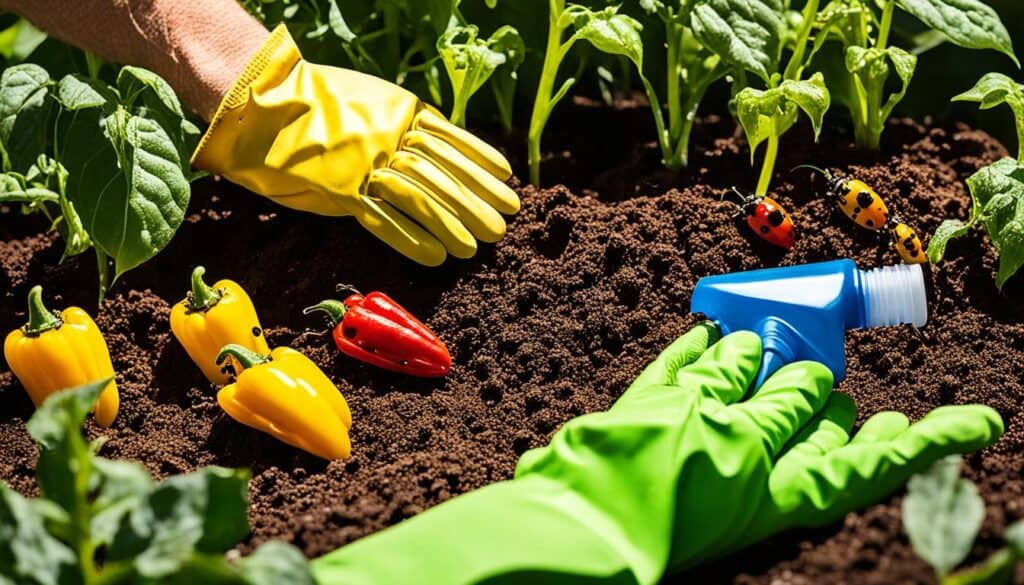
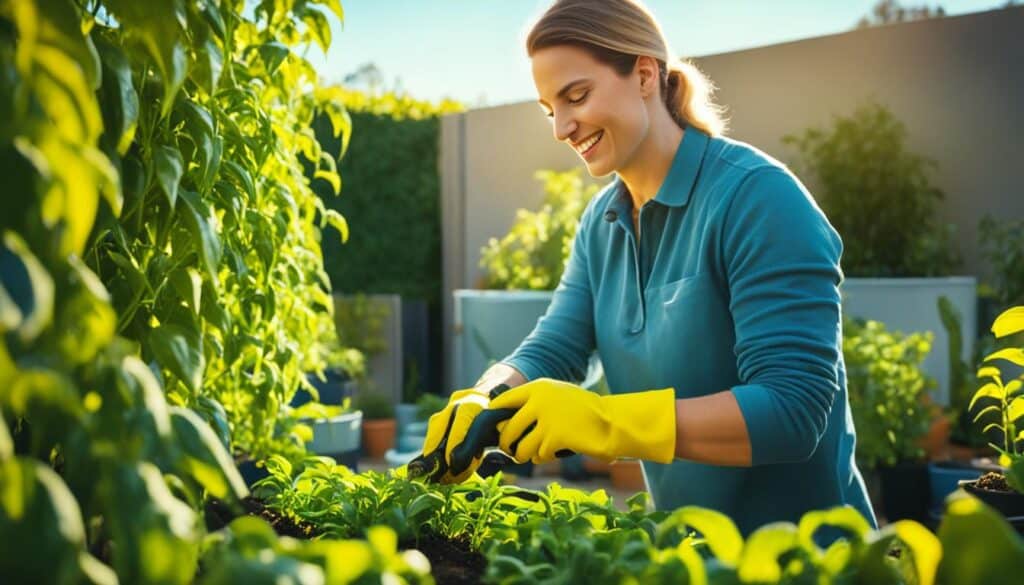
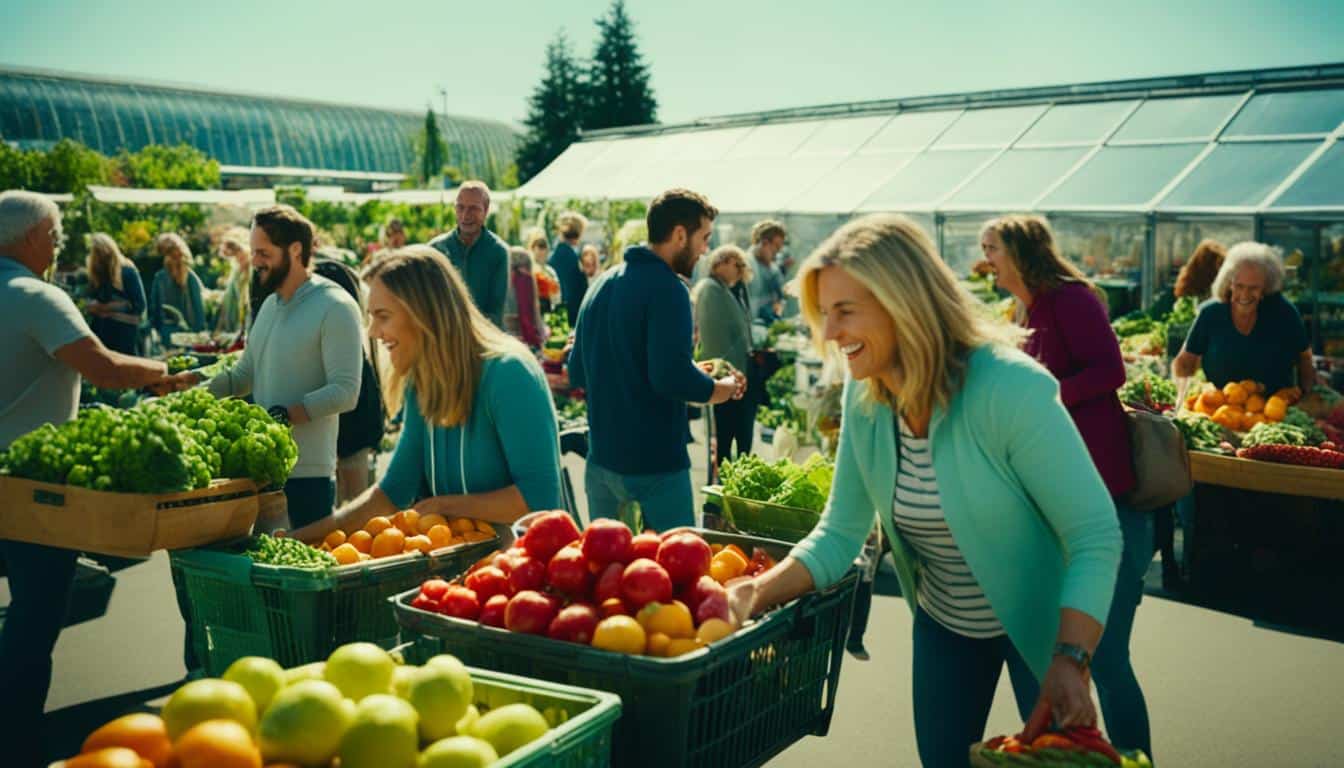
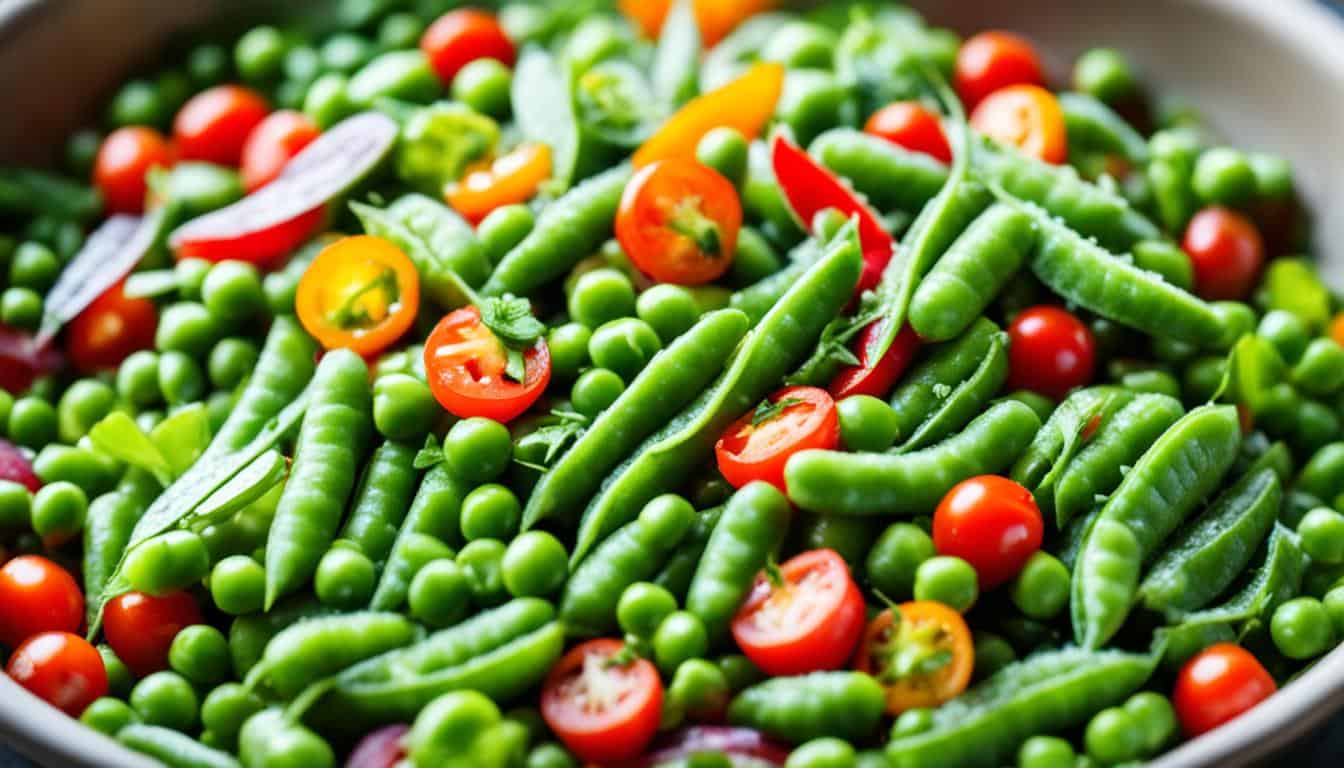
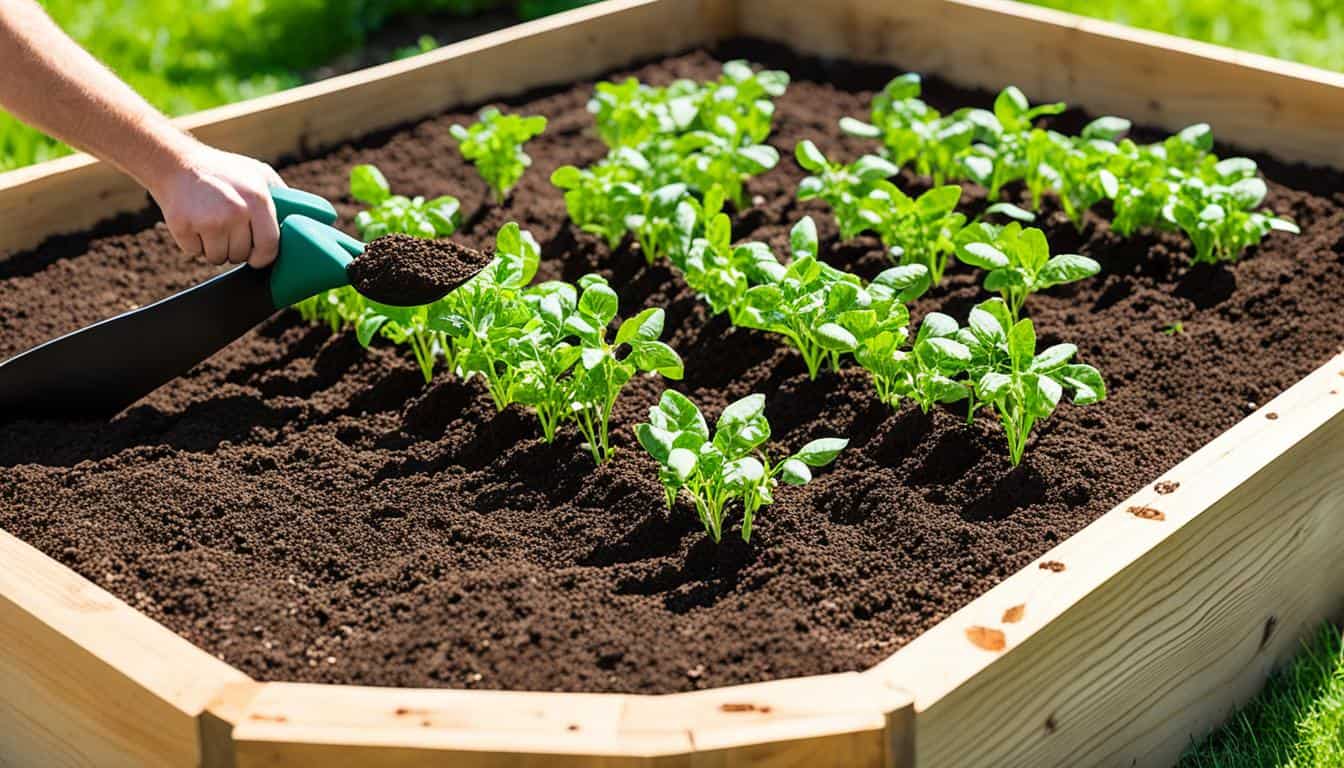
Leave a Reply